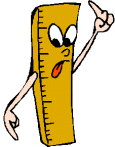
Measuring Air Quality

There are many ways to measure air pollution, with both simple chemical and physical methods and with more sophisticated electronic techniques. There are four main methods of measuring air pollution.
Passive sampling methods provide reliable, cost-effective air quality analysis, which gives a good indication of average pollution concentrations over a period of weeks or months. Passive samplers are so-called because the device does not involve any pumping. Instead the flow of air is controlled by a physical process, such as diffusion. Diffusion tubes are simple passive samplers, which provide very useful information regarding ambient air quality. They are available for a number of pollutants, but are most commonly and reliably used for nitrogen dioxide and benzene. The tubes, which are 71mm long with an internal diameter of 11mm, contain two stainless steel gauzes placed at one end of a short cylinder. The steel gauzes contain a coating of triethanolamine, which converts the nitrogen dioxide to nitrite. The accumulating nitrates are trapped within the steel gauze, ready for laboratory analysis. The tube is open to the atmosphere at the other end, which is exposed downwards to prevent rain or dust from entering the tube. To ensure that all the nitrogen dioxide originates from the test site, the tubes are sealed before and after exposure. The tubes are manually distributed and collected, and are analysed in a laboratory.
Active sampling methods use physical or chemical methods to collect polluted air, and analysis is carried out later in the laboratory. Typically, a known volume of air is pumped through a collector (such as a filter, or a chemical solution) for a known period of time. The collector is later removed for analysis. Samples can be collected daily, providing measurements for short time periods, but at a lower cost than automatic monitoring methods.
Automatic methods produce high-resolution measurements of hourly pollutant concentrations or better, at a single point. Pollutants analysed include ozone, nitrogen oxides, sulphur dioxide, carbon monoxide and particulates. The samples are analysed using a variety of methods including spectroscopy and gas. The sample, once analysed is downloaded in real-time, providing very accurate information.
Remote optical / long path-analysers use spectroscopic techniques, make real-time measurements of the concentrations of a range of pollutants including nitrogen dioxide and sulphur dioxide.
The amount of pollution in the air, however sampled, is usually measured by its concentration in air. The concentration of a pollutant in air may be defined in terms of the proportion of the total volume that it accounts for. Concentrations of pollutant gases in the atmosphere are usually measured in parts per million by volume (ppmv), parts per billion by volume (ppbv) or parts per trillion (million million) by volume (pptv). Pollutant concentrations are also measured by the weight of pollutant within a standard volume of air, for example microgrammes per cubic metre (µgm-3) or milligrammes per cubic metre (mgm-3).
Websites
Other topics
• NETCEN
• NETCEN
• Instrumentation
• Introduction
• Asthma
• Carbon Monoxide
• Cars
• CATs
• Chemistry
• Cities
• Clean Air Acts
• Cleaner Fuels
• Countryside
• Dispersion
• Doing Our Bit
• Dustmite
• Emissions
• Fossil Fuels
• History
• Human Health
• Impacts
• Indoors
• Industry & Power
• Legislation
• Lichens
• London Smog
• Management
• Measuring
• Megacities
• Modelling
• Monitoring
• Mould Spores
• Natural Sources
• Nitrogen Dioxide
• Outdoors
• Ozone
• Particulates
• Pollutants
• Radon
• Smog
• Smoke
• Smoking
• Standards
• Sulphur Dioxide
• UK Air Pollution
• UK Strategy
• Vehicle Controls
• VOCs
• Wildlife
 Print Topic
Print Topic